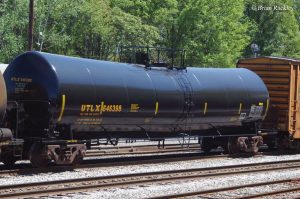The Different Types of Tank Cars
Tank cars a type of railway transport which carry different materials such as oil, chemicals, and other such materials. Their configuration largely depends upon the kind of content they take. The Department of Transport regulates tank cars design according to the specifications and standards. These standards are set up by experts in their respective fields.
There are a lot of types of tank cars depending on their use. Some of the most common ones are:
Types of Tank Cars:
1. General Service Cars
The tank cars which the industry uses to transport commodities which do not require particular attention are known as general service cars. They can carry both controlled and non-controlled items. The DOT-111 is generally put to service to help with such stuff. They can bring both liquid and semi-solid material. The capacity for a general tank car is usually around 20 thousand gallons for liquid.
They compose of stainless steel with a minimum thickness of half an inch. The general service tank car requires less pressure, so there is no need for a thicker body. The industry rates it at 100 pounds of pressure, which means that customers cannot use it for high-end chemicals that require pressure.
Although the tank cars have less pressure, still they sometimes have a protective housing. It is similar to what you will find on a pressure tank car. The protective unit provides extra support to the pipes and valves that the tank car contains.
Uses:
The general tank car transports commodities such as fuel, edible oil, corn syrup, caustic soda, molten sulfur, ethanol, and other petroleum products.
2. High-Pressure Tank Cars:
The second type of car known as a pressure tank car can carry fossil fuels and other chemical products safely and proficiently. It can take more than 30 thousand gallons of products.
They are built with thicker outer walls to withstand not only pressure but also the heat. It makes them stronger than regular general tank cars. The minimum requirement for the plates is ranging from half an inch to eleven by sixteen for a steel tank car.
A lot of designs determine the type of material you need to transport. If you require a certain amount of pipes, gauges, and valves, then the manufacturer can provide you with it. You can request them to install a well-built metal seated ball valve to prevent any leaks. It will help you contain the liquid in the tank and prevent any loss.
Tank Car Uses:
The high-pressure tank cars can liquefied petroleum gas, carbon dioxide, acids, and other chemicals that require pressure. The laborer can store the products in the containers through a series of valves and pipes. The tank cars contain all of these in a single housing.
Therefore, consumers typically use it to carry such things as liquefied gases, toxic materials, acids, and corrosive materials. The inner lining of the wall consists of rubber or glass. It prevents the liquid from coming in contact with the stainless steel.
Several factors determine the appropriate car to choose for the task. The transportation authority classifies the tank cars according to the material they transport.
The pressure tank cars have a pressure plate. There are some more gears which we can find on the pressure plates. These are the distinguishing elements which help in determining whether a tank car in of general or pressurized type
Sample Line:
The device can help us obtain a sample from the tank of the material which is present in it. The mechanism consists of an open pipe which goes inside the container. It has a needle valve at the top half outside the container.
To obtain a sample, the technicians connect a line to the valve. You take the pipe and attach it to the cylinder. As soon as you open the lid, the liquid will flow into the small cylinder. The technical staff takes the sample to the laboratory for analysis.
The pressure gauge can also work off the valve and determine the pressure inside the tank. As the pipe does not extend to the bottom, so you can never be sure that the container is empty.
Pressure Gauge:
The gauge can help determine the pressure at any given moment. The mechanism is quite simple. It has a metering system to help us determine the amount of liquid present in a tank car. The workers will determine the number of fumes inside the tank. They will then calculate the amount of fluid present in the chamber.
Thermometer:
A thermometer can tell us the exact temperature of the material. The thermometer is at the top of a pipe which extends inside. This pipe contains oil which does not freeze. The oil will transfer the temperature to the device will accurately tell us the temperature. Some of the more modern tanks have a digital thermometer which can be more accurate than the analog one.
Excess Flow Valves:
The excess flow valve prevents the outward flow of liquid. It automatically closes, preventing any material from escaping. Although the component is there as a precautionary measure, still the design allows for a bypass feature.
The hazardous material which the companies store in them requires an excess valve to prevent any toxic material from releasing in the air.
The railroad accidents can be disastrous as it has the potential to release harmful material into the atmosphere. Although because of the strict check and balance, the number of incidents is meager. Even then, the leading cause of the accident is human error and not the equipment on the tank cars itself.
Conclusion:
There are a lot of types of car which in service today. The transfer most of the delicate material is done using tank cars. Therefore they are made in such a way to prevent any severe damage to the container itself. Moreover, due to its continuous use since past decades, new and better design comes in the market each year.
